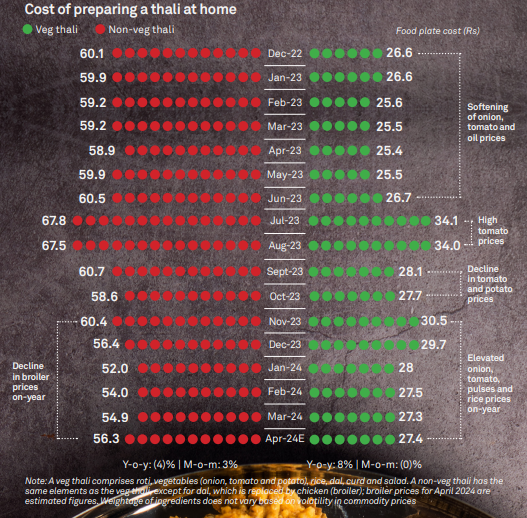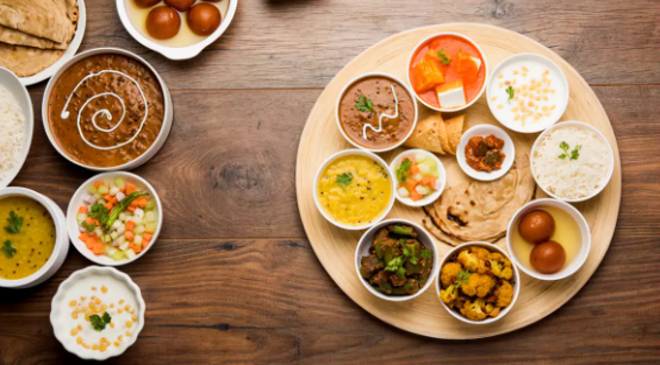The report attributed the overall hike in vegetarian thali price to a 4% increase in onion, 40% in tomato, 38% in potato, 14% in rice and 20% in pulses.
The cost of home-cooked, non-veg thali was down on-year in April due to lower poultry prices, but veg thali was dearer with an uptick in prices of onion, potato and tomato, according to a Crisil report released on Wednesday.
Read More: Gold Rates Today: Check Top City Wise Gold Prices In India On 9th May, 2024
As per Crisil Market Intelligence and Analysis’ monthly “Roti Rice Rate” report, the soaring prices of onions and tomatoes have pushed up the average cost of a vegetarian thali by nearly 8% in April.
However, a decline in broiler prices contributed to a decrease in the cost of a non-vegetarian meal.

Read More: Asian Paints Q4 Results: Weak demand, downtrading hurts revenue; Volume growth of 10%
The cost of veg thali, which comprises roti, vegetables (onions, tomatoes and potatoes), rice, dal, curd and salad, increased to Rs 27.4 per plate in April from Rs 25.4 in the year-ago period, and was also marginally higher when compared to Rs 27.3 in March 2024, it said.
Reasons For Price Increase
The report attributed the overall hike in vegetarian thali price to a 4% increase in onion, 40% in tomato, 38% in potato, 14% in rice and 20% in pulses.
Prices of cumin, chilli and vegetable oil declined 40%, 31%, and 10%, respectively, preventing further increases in the thali cost, it added.
Read More: Good News For PhonePe, Google Pay; India To Delay UPI Payments Market Cap: Report
In the case of non-veg thali, which comprises all the same ingredients but dal gets replaced by chicken, the price declined to Rs 56.3 in April as compared to Rs 58.9 in the year-ago period, but was higher when compared with the March price of Rs 54.9 per thali.
A 12% decline in the broiler price, which has a 50% weightage in the overall price, was the primary reason for the decline in the cost of non-veg thali on a year-on-year basis, it said.
When compared to March, the price of non-veg thali increased by 3% due to a 4% increase in the price of broilers, mainly on account of higher demand and high input costs, the report said.



































